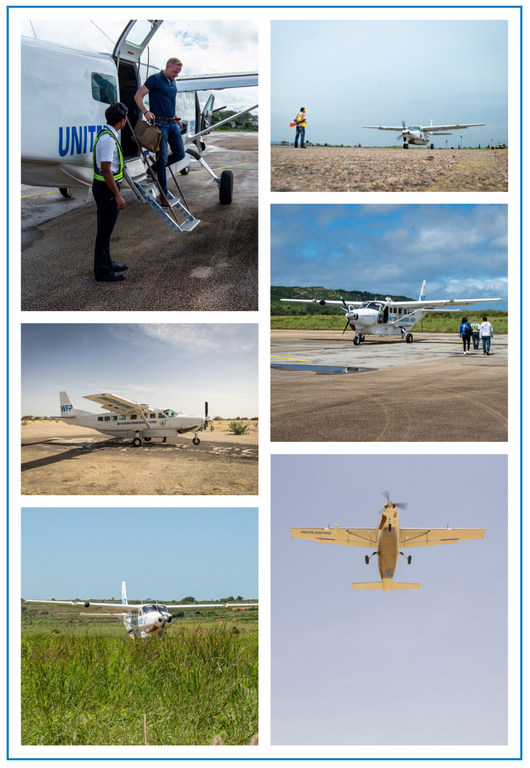For George Stroumboulopoulos, the only way to get to an inaccessible destination near the border of Chad in 2004 was to fly on an UN Humanitarian Air Service plane: it was the first time he'd ever heard of UNHAS.
"I just watched how it was a central driver for humanitarian agencies from all over - not just the UN agencies - and it was the only organisation that could do that," said Mr. Stroumboulopoulos, an actor, media interviewer and producer, who also now serves as an Ambassador for the Word Food Programme ( WFP ), which runs the lifesaving service.

For two decades, UNHAS has been providing the vital air links which allow various UN agencies to deliver humanitarian workers and assistance to hard-to-reach regions.
From the COVID pandemic - when commercial flights shut down - to the earthquake in Haiti in 2010, the service has keep going under some of the most challenging circumstances imaginable.
But with less funding available, UNHAS flights and the vital resources they transport, are in danger of stalling in mid-air.
"What we are trying to do here is to get political support from Member States to let them know that we have a promise of leaving no one behind, and it's very important that we keep funding for UNHAS." said Hedley Tah, head of external relations for the service at a pop-up UNHAS exhibit during high-level week in New York.
A most efficient system
Identifying and correcting inefficiencies is one of the aims of the UN80 Initiative , the UN's systemwide reform plan rolled out by Secretary-General António Guterres earlier this year.
UNHAS is an example of a system that is already lean and efficient, according to Mr. Tah, given that it is a centralised service is used by over 600 UN organisations, relieving them of having the set up or pay for their own.
"We are able to do that for the entire humanitarian community," he said. "We are able to allow other organisations to focus more on their programmatic mandates while we run the supply chain for them, making sure that gains are made in terms of efficiencies."
He noted that 70 per cent of costs associated with humanitarian aid come from supply chains - which involves flights and distribution.
"A small percentage of cost savings with a supply chain can result into hundreds of millions of dollars in savings," and this is where UNHAS comes into play.

'Doing more with less'
Compared to last year, UNHAS now has 50 per cent less funding to do its work.
"That affects our response to the humanitarian community," said Mr. Tah. "But nonetheless, we are now doing more with less."
To continue operating effectively despite funding challenges, the service has reduced the number of aircraft and renegotiated its contracts. While flights are grounded to some destinations, they still reach 21 countries.
According to last year's WFP UNHAS Annual Review , the aviation service strategy through 2028 includes improvements in fleet readiness, emergency deployment mechanisms and digital booking systems.
"The kind of expertise required to be able to pull off what UNHAS does is unparalleled," said Mr. Stromboulopoulos, who flew with the service in Syria last year.
"I can't imagine the level of heartache and pain and loss of life, loss and dignity, loss and hope that comes if you don't have something like UNHAS."

What makes the flights special?
- In the past decade, more than 3.8 million humanitarian workers have flown with UNHAS, bringing hope and life-saving aid to communities at need.
- In 2024, alone, thousands of metric tons of cargo were transported across 21 countries, the annual report says.
- A small and versatile jet, the Cessna 208 Caravan, is one of the most frequently used aircraft. The plane has the ability to take off and land on short and unpaved runways - great for regions that lack roads and airport infrastructure.
- This sturdy aircraft can withstand high temperatures thanks to its powerful turboprop engine, which consumes less fuel than traditional jet engines.
- The plane carries up to 12 aid workers per flight. Other aircraft in use by UNHAS include the Airbus Super Puma H215 helicopter and the De Havilland Canada Dash-8 plane.






